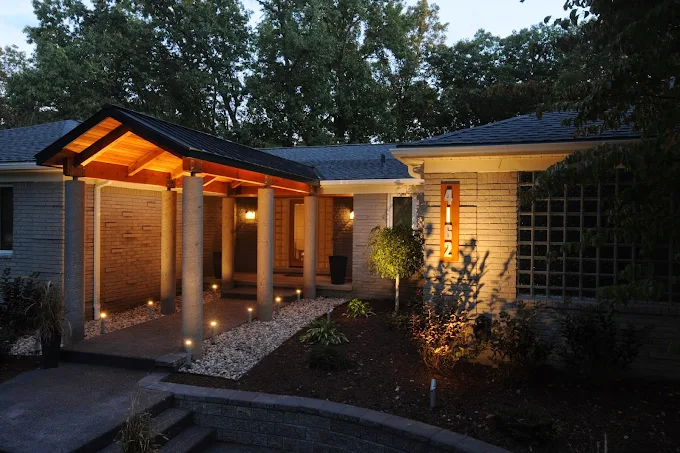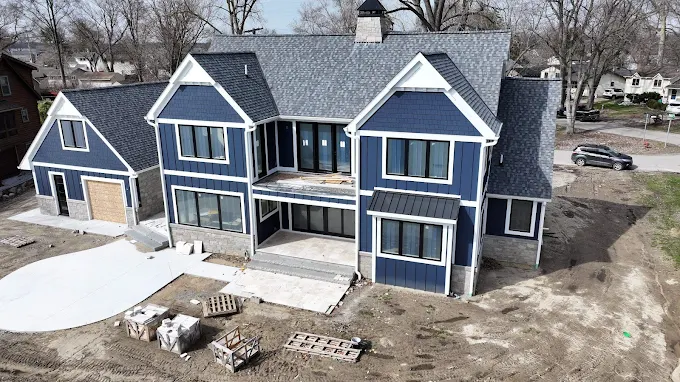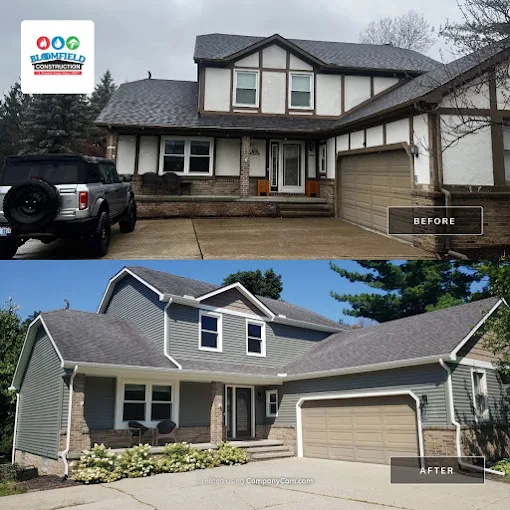Types of Mold Commonly Found in Bloomfield Hills Homes
Bloomfield Hills, a picturesque suburb in Michigan, is known for its lush landscapes and beautiful homes. Bloomfield Hills Roof Replacement Specialists . However, like any area with a humid climate, it is susceptible to mold growth. Mold is a common household problem that can cause not only structural damage to homes but also health issues for residents. Understanding the types of mold commonly found in Bloomfield Hills homes is crucial for effective mold removal and prevention.
One of the most prevalent types of mold in Bloomfield Hills is Cladosporium. This mold tends to grow on wood surfaces, fabrics, and HVAC vents. It is known for its black or green appearance and can be particularly problematic for individuals with allergies or asthma. Cladosporium thrives in both warm and cool environments, making it a year-round concern for homeowners.
Another common type is Aspergillus, a mold that can appear in various colors, including white, green, or yellow. It often grows on walls, insulation, and around windows where moisture is present. Aspergillus can release harmful spores into the air, which can be inhaled and lead to respiratory issues. It is essential to address Aspergillus promptly to ensure the air quality in homes remains safe.
Stachybotrys, more commonly known as black mold, is perhaps the most infamous type of mold. It typically grows in areas with excessive moisture, such as basements, bathrooms, and under leaky roofs. Stachybotrys is known for producing mycotoxins, which can cause severe health problems, including chronic respiratory issues and neurological symptoms. Its slimy, dark appearance makes it easy to identify, but also highlights the seriousness of its presence.
Penicillium is another mold variety that frequently appears in Bloomfield Hills homes. It is typically blue or green and has a velvety texture. Penicillium is often found on water-damaged materials, such as wallpaper, carpet, and wooden surfaces. While some species of Penicillium are used in antibiotics, those found in homes can provoke allergic reactions and asthma attacks.
The presence of these molds underscores the importance of effective mold removal strategies. Professional mold removal services in Bloomfield Hills, MI, can assess the extent of mold growth and implement appropriate remediation techniques. These services typically involve identifying moisture sources, removing contaminated materials, and applying treatments to prevent future outbreaks.

Homeowners can also take proactive measures to mitigate mold growth. Regularly inspecting and repairing leaks, ensuring proper ventilation, and maintaining humidity levels below 60% can help prevent mold from becoming a persistent problem. Additionally, using dehumidifiers and exhaust fans in moisture-prone areas can significantly reduce the risk of mold development.
In conclusion, understanding the types of mold common in Bloomfield Hills homes is essential for maintaining a healthy living environment. By recognizing the signs and taking swift action, residents can protect their homes and health from the detrimental effects of mold. Whether through professional services or diligent home maintenance, addressing mold issues promptly is key to ensuring a safe and comfortable home.
The Importance of Professional Mold Inspection and Assessment
Mold is a silent invader that can wreak havoc on homes and health alike. In Bloomfield Hills, MI, where humidity levels can fluctuate, maintaining a mold-free environment is crucial. This is where professional mold inspection and assessment come into play, epitomizing the first and most crucial step in mold removal and ensuring a safe living space.
Professional mold inspection offers a comprehensive evaluation of your home, identifying not only the visible signs of mold infestation but also the hidden ones that might go unnoticed by an untrained eye. Experts are equipped with the knowledge and tools necessary to detect mold in its earliest stages, which is vital because mold can grow rapidly and cause significant damage if left unchecked. Moreover, professionals understand the diverse species of mold, some of which can be toxic, and tailor their strategies accordingly to address specific threats.

The assessment phase is equally important, as it involves understanding the extent of the mold problem and its root causes. Mold thrives in specific conditions, typically in areas with excessive moisture. A thorough assessment will identify sources of moisture intrusion, such as leaks or inadequate ventilation, and recommend appropriate corrective measures. Without addressing these underlying issues, any attempt at mold removal would be incomplete and temporary.
Engaging in professional mold inspection and assessment in Bloomfield Hills, MI, is also a prudent financial decision. Early detection and remediation can prevent costly structural damage to your home and mitigate potential health risks. Mold exposure can lead to a range of health problems, from mild allergic reactions to severe respiratory issues, particularly in vulnerable populations like children and the elderly. By investing in professional services, homeowners not only protect their property but also safeguard their familys well-being.
In conclusion, the importance of professional mold inspection and assessment cannot be overstated, especially in areas like Bloomfield Hills, MI, where environmental conditions can foster mold growth. These services provide a comprehensive approach to mold management, ensuring that infestations are not only removed but also prevented from recurring. By opting for professional expertise, homeowners ensure a healthier, safer living environment and protect their investment for the future.
Effective Mold Removal Techniques and Technologies Used by Experts
Mold infestation is a common problem faced by many homeowners, particularly in areas with high humidity levels like Bloomfield Hills, MI. The need for effective mold removal is vital not only for maintaining the structural integrity of buildings but also for ensuring the health and well-being of the occupants. Experts in mold removal employ a variety of techniques and technologies that are both effective and efficient in eradicating mold from homes and commercial properties.

The first step in effective mold removal is a thorough assessment and evaluation of the affected area. Professionals use advanced tools such as infrared cameras and moisture meters to identify hidden mold colonies and underlying moisture issues that may not be visible to the naked eye. This comprehensive assessment allows experts to develop a targeted mold removal plan tailored to the specific needs of the property.
Once the assessment is complete, containment is a crucial step in preventing the spread of mold spores to unaffected areas. Experts use physical barriers, such as plastic sheeting and negative air pressure systems, to isolate the contaminated zones. This ensures that during the removal process, mold spores do not disperse and cause new infestations elsewhere in the building.
The actual removal of mold is carried out using a combination of manual cleaning and advanced technologies. Certified flood and mold services in Michigan Zone 30 Manual cleaning involves scrubbing affected surfaces with specialized cleaning agents that are designed to kill mold and prevent regrowth. For more severe infestations, experts may use technologies such as dry ice blasting or soda blasting, which are non-invasive methods that effectively remove mold from surfaces without damaging the underlying materials.
In addition to physical removal, experts also focus on addressing the root cause of mold growth, which is often excessive moisture. This may involve repairing leaks, improving ventilation, and installing dehumidifiers to maintain optimal indoor humidity levels. By tackling moisture issues, experts help prevent future mold growth and ensure long-term protection for the property.
Finally, air purification is often employed to remove any remaining mold spores from the air. HEPA air scrubbers and filters capture microscopic particles, ensuring that the indoor air quality is restored to a safe and healthy level.
In conclusion, effective mold removal in Bloomfield Hills, MI, relies on a combination of thorough assessment, containment, physical removal, moisture control, and air purification. By employing these expert techniques and technologies, professionals can ensure that mold is eradicated efficiently and effectively, safeguarding both the property and its occupants.
Tips for Preventing Mold Growth in Your Bloomfield Hills Home
Mold growth in homes is a common issue that can lead to various health and structural problems if not addressed promptly. For residents of Bloomfield Hills, MI, where humidity levels can contribute to mold formation, taking proactive measures to prevent mold growth is essential. This essay will explore some effective tips to help homeowners in Bloomfield Hills maintain a mold-free environment.
Firstly, controlling moisture levels is crucial in preventing mold growth. Mold thrives in damp environments, so it is important to keep indoor humidity levels below 60%. Using dehumidifiers, especially in basements and other moisture-prone areas, can significantly reduce the risk of mold. Additionally, ensuring proper ventilation in areas like bathrooms and kitchens, where humidity tends to be higher, can also help manage moisture levels. Installing exhaust fans and using them regularly during and after activities that produce moisture, such as showering and cooking, can be highly effective.
Secondly, addressing leaks promptly is vital. Water leaks from pipes, roofs, or windows can create ideal conditions for mold to develop. Regularly inspecting your home for any signs of leaks and repairing them immediately can prevent water accumulation and mold growth. It is also wise to check your homes foundation for any cracks or openings that might allow water to seep in, particularly during heavy rains or snowmelt in Bloomfield Hills.
Another important tip is to ensure proper drainage around your home. Water should be directed away from the foundation to prevent potential leaks and seepage. This can be achieved by ensuring that gutters and downspouts are clean and functioning correctly. Additionally, grading the soil around your home to slope away from the foundation can help keep water from pooling near your house.
Regular cleaning and maintenance are also essential in preventing mold. Mold can grow on various surfaces, including walls, ceilings, and even furniture, if not cleaned properly. Regularly dusting, vacuuming, and using mold-inhibiting cleaning products can keep mold at bay. Pay special attention to areas that are prone to moisture, such as bathrooms and basements, and consider using mold-resistant materials in these spaces.
Lastly, it is important to monitor and control indoor air quality. Using air purifiers with HEPA filters can help reduce mold spores in the air. Additionally, keeping an eye on indoor plants and ensuring they are not overwatered can help prevent mold growth in potting soil.
In conclusion, preventing mold growth in your Bloomfield Hills home requires a combination of moisture control, timely repairs, proper drainage, regular cleaning, and air quality management. By implementing these tips, homeowners can protect their homes and health from the negative effects of mold. Taking proactive steps not only helps maintain a safe and healthy living environment but can also save you from costly mold remediation in the future.
